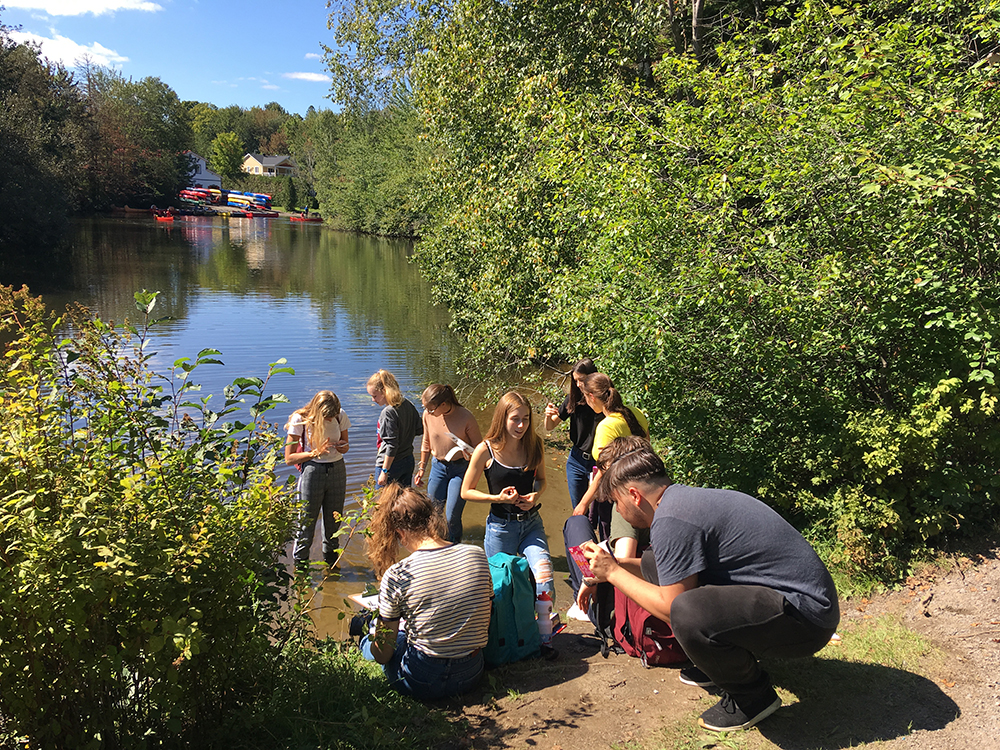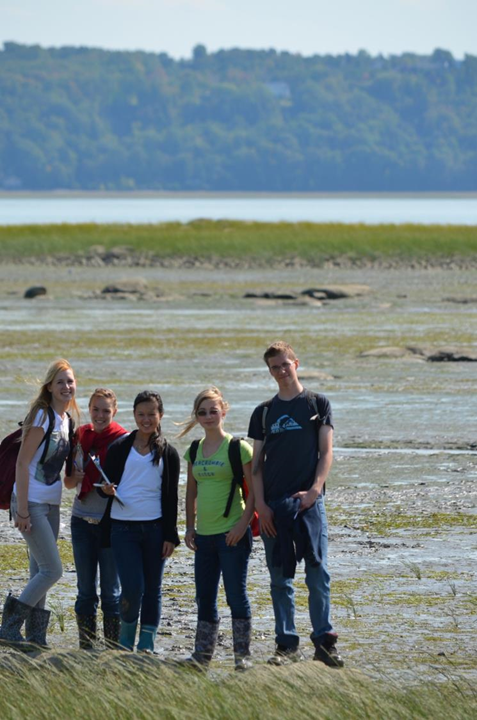A Multidisciplinary Course to Initiate Students to the Scientific Approach in Natural Sciences
This article is a translation of a text first published in the French edition of Profweb.
How to prepare Natural Sciences students to the complexity of the problems that they will have to solve throughout their lives, both as scientists and as citizens? In an obligatory multidisciplinary course for the student of the Environment, Life and Society profile, my colleagues and I bet on problem-based learning. We use current environmental issues to offer students authentic and contextualized learning situations.
Caroline Dupont hosted, with her colleague Frédéric Parrot, a workshop about the Environment course at the AQPC colloquium in 2018 (resource in French only).
The Environment course
At Cégep de Sainte-Foy, the Natural Sciences program is offered, amongst others, through an Environment, Life and Society profile. One of the courses of that profile, the Environment course, is a multidisciplinary course given by teachers of 2 disciplines (biology and chemistry or physics). The course’s target competency “Apply a scientific approach in a domain proper to natural sciences”.
Each year, the course focuses on a theme related to a current environmental issue. The teachers choose themes that provoke discussions and debates in the community:
- TransCanada’s East Energy pipeline
- the St Lawrence River’s health status
- Québec City’s drinkable water supply
Interdisciplinary rationality islands
The theme is analysed with the interdisciplinary rationality island (IRI) approach, a model by Gérard Fourez, presented by Chantal Pouliot and Audrey Groleau in an article in the Pédagogie collégiale magazine [in French]. (The idea behind the IRIs is to “make an island of rationality emerge in a sea of ignorance”. (Our translation)) That model was the spark that I needed to structure the course as I imagined it.
The IRI model brings the students to deal with an issue through an approach that closely resembles the scientific approach, which is one of the course’s target competencies. Briefly, the steps to follow are:
- The Snapshot
The students share their initial knowledge and opinion about the subject. In the Environment course, we ask each team to produce a concept map that structures those elements.
- The panorama
The teams make a list of parametres to consider to deal with the subject and for which they might need to research some information:
- actors
- stakes
- norms
- scientific concepts
- The closure of the approach
Each team chooses the angle with which they will deal with the theme, they choose the specific subject that they will explore. The team comes up with an action plan. The students do field trips, documentary research. Experts can be contacted or invited to come in class.
In the Environment course, the students produce object records that serve as bibliographic records synthesising the information collected from each source of information.
- Synthesis
In order to share the information collected, each team produces a fact sheet that resembles a scientific poster. The teams also do oral presentations as round tables, as a group. Lastly, with all the necessary information available, the students individually take a position on the studied controversy.
Depending on the final question asked, they have to take a side, either in favor or against, or even make a recommendation related to the issue that they are dealing with. Each student produces an argumentative text to present their position, supported by their research.
- Action
In order to make the work of the students shine outside of the classroom, we offer them to share their reflection with the people or organizations involved. On a voluntary basis, they are invited to share their opinion with, for example:
- the municipal representatives during a session of the city council
- their countrymen in an open letter in a newspaper
- other student during the Symposion of the Natural Sciences graduates
You can have a look at the course calendar and the list of evaluation criteria (in French).
Betting on socioscientific controversies allows to anchor their course in the real, in current news, in what we hear about in the media. It connects with the students. It also prepares them to participate in societal debates: the scientists have a role to play outside of their laboratory. In my opinion, scientists must take part in social debates, in decisions, in education… I want to take part in the training of scientific professionals involved in their environment.
Because, too often, students do not feel like their science courses are aimed at making the decoding of their own world easier, but rather that they are only intended to make them enter the world of the scientists.
The strength of the course is to put the learnings in context. The themes are analysed in a multidisciplinary manner, both inside and outside natural sciences. In doing so, we are looking not only at the different scientific disciplines involved (chemistry, biology, physics), but also at all the other aspects of the issue: economic, political, and social… My colleagues who give the class and I are obviously not specialists in all of those fields! But our job is not to be an expert in everything: it is to support the students in their learning; to teach them how to learn. Besides, our evaluation is focused on the quality of the approach, the process.
The format of the course is often bewildering for the students because it is less about “what do I need to know and reproduce on a copy” and more about action. The students need time to get used to the format, but, in the end, they feel more involved in the course and talk about it with their family and friends, which makes the conversation evolve.
A tool for documentary research: using Zotero to manage your bibliography
Research activities are at the heart of this course. In order to facilitate the organisation of sources and the sharing of references between the members of a team or with the teachers, we train the students to use Zotero. Zotero, a free software, allows, among others, to insert references in Word documents and to automatically generate a bibliography in those documents, which the students appreciate enormously. The comment we get the most is “Why wasn’t this shown to us earlier?” They then know how to use it for their Cégep courses and they will be able to use it at university.
Learning to work as a team
The students work as a team throughout the semester. Teamwork is central to the course. We want the students to develop their teamworking skills, skills that will be useful all throughout their journey. We refer them, among others, to the team work survival kit (resource in French) on our Cégep’s website.
The formation of the teams, in the first week of the class, is an important step. We take it seriously. We invite the students to show introspection: reflect about the type of teammate that they are, about their assets and their limitations as a member of a team. We organize a team dating session to allow each student to choose teammates that they judge most complementary to their own profile.
The teamworking skills of the students are evaluated through auto-assessment and peer assessment (resource in French), as well as an evaluation by the teachers.
To share the documents within their team and with me, I encourage students to use a tool adapted to collaborative work. In the past, we have used Dropbox, but Google Drive could also be an interesting platform to facilitate simultaneous work.
Transferability
In my opinion, the model of the IRIs could be used in any course where we are seeking to develop a research approach, on the scale of a small or large project. Can you see how you could integrate them in the courses you are giving?




